26 powerful academic phrases to write your introduction (+ real examples)
If you struggle with writing an introduction and finding the right wording, academic key phrases can help! Here is a list of 26 useful academic phrases to write the introduction of a research paper or thesis. Furthermore, examples from published academic papers across various disciplines are provided to demonstrate how the academic phrases can be applied effectively.
Disclosure: This post may contain affiliate links, which means I may earn a small commission if you make a purchase using the links below at no additional cost to you . I only recommend products or services that I truly believe can benefit my audience. As always, my opinions are my own.

Academic key phrases presenting the research aim or objective in an introduction
Academic key phrases linking the research to existing publications in an introduction, academic key phrases pointing out research gaps in an introduction, academic key phrases highlighting the research contribution in an introduction, academic key phrases previewing findings in the introduction, the aim of this study is….
Example: “ The aim of this study is the investigation of different molten copper alloys regarding their efficiency as catalytic media for the pyrolysis of methane in an inductively heated bubble column reactor. ” ( Scheiblehner et al. 2023, p. 6233 )
In this study, we investigate…
Example: “ In this study, we investigate the spatial shoot organization of the salt marsh grass Spartina anglica (common cordgrass) in small (0.5–1.5 m), establishing patches across a wide range of wave exposure and sediment conditions along the European coast. ” ( Van de Ven, 2022 et al., p. 1340 )
Our primary objective was to assess…
Example: “ Our primary objective was to assess subpopulation status through estimation of survival rates and abundance, particularly in comparison with the relative stability from 2007 to 2010 reported by Bromaghin et al. (2015) .” ( Bromaghin et al., 2021, p. 14252 )
This study aims to answer the following research question:
Example: “ This study aims to answer the following research question: how is the resilience of firms defined in the business and management field? ” ( Conz and Magnani, 2020, p. 400 )
The goal of this paper is to…
Example: “The goal of this paper is to delineate whether, why, and how human-AI interaction is distinctly difficult to design and innovate.” ( Yang et al., 2020, p. 174 )
You may also like: How to write a fantastic thesis introduction (+15 examples)
The topic gained considerable attention in the academic literature in…
Example: “ The relationship between BITs and FDI gained considerable attention in the academic literature in the last two decades .” ( Amendolagine and Prota, 2021, p. 173 )
Prior research has hypothesized that…
Example: “Prior research has hypothesized that racial and ethnic disparities may be mitigated if the patient and provider share the same race due to improved communication and increased trust” ( Otte, 2022, p. 1 )
Existing research frequently attributes…
Example: “Existing research frequently attributes these challenges to AI’s technical complexity, demand for data, and unpredictable interactions.” ( Yang et al., 2020, p. 174 )
Interestingly, all the arguments refer to…
Example: “Interestingly, all the arguments above refer to daily role transitions—more specifically: role transitions on teleworking days—as an important explanatory mechanism for both the possible conflict-reducing effect and the potential conflict enhancing effects of telework.” ( Delanoeije et al., 2019, p. 1845 )
Prior studies have found that…
Example: “ Prior studies have found that court-referred individuals are more likely to complete relationship violence intervention programs (RVIP) than self-referred individuals. ” ( Evans et al. 2022, p. 1 )

If you are looking to elevate your writing and editing skills, I highly recommend enrolling in the course “ Good with Words: Writing and Editing Specialization “, which is a 4 course series offered by the University of Michigan. This comprehensive program is conveniently available as an online course on Coursera, allowing you to learn at your own pace. Plus, upon successful completion, you’ll have the opportunity to earn a valuable certificate to showcase your newfound expertise!
Yet, it remains unknown how…
Example: “Yet, it remains unknown how findings from aeolian landscapes translate to aquatic systems and how young clonally expanding plants in hydrodynamically exposed conditions overcome these establishment thresholds by optimizing shoot placement.” ( Van de Ven, 2022 et al., p. 1339 )
There is, however, still little research on…
Example: “There is, however, still little research on what integrated STEM approaches require from schools and teachers, and on the potential obstacles that may prevent teachers from running this kind of teaching.” ( Bungum and Mogstad, 2022, p. 2 )
Scholars working on the topic are still dealing with unanswered questions.
Example: “This implies that scholars working on the resilience of firms are still dealing with unanswered questions such as ‘Which definition of resilience do I have to adopt? What am I looking at?” ( Conz and Magnani, 2020, p. 400 )
Existing studies have failed to address…
Example: “ University–industry relations (UIR) are usually analysed by the knowledge transfer channels, but existing studies have failed to address what knowledge content is being transferred – impacting the technology output aimed by the partnership.” ( Dalmarco et al. 2019, p. 1314 )
The topic is under-researched
Example: “‘Third places’ – public and commercial sites that are neither home nor work – are often overlooked by policymakers, health officials, and researchers alike (Glover & Parry, 2009). Yet they can serve vital and life-saving roles in our communities. Their relevance to public health and quality of life is understated and under-researched, particularly among socioeconomically marginalized, vulnerable, and isolated individuals. ” ( Finlay et al., 2020, p. 1 )
This paper contributes to the field…
Example: “ This paper contributes to the field by investigating how teachers perceive gains and challenges in an extensive teaching project called Project Weather Station, where lower secondary students design, build and program their own weather station by use of digital sensos and microcontrollers. ” ( Bungum and Mogstad, 2022, p.2 )
In light of these considerations, we think it is interesting to analyze…
Example: “ In the light of these considerations, we think it is interesting to analyse the impact of BITs on the propensity of foreign investors to generate linkages to local suppliers from both a political and an academic point of view. To the best of our knowledge, this is the first study that addresses this issue .” ( Amendolagine and Prota, 2021, p. 174 )
The contributions of this study are twofold/threefold/…
Example: “ The contributions of this study are threefold. First, by examining daily role transitions as mediators in the relationship between telework and work-to-home and home-to-work conflict, our study helps to understand through which mechanisms telework affects thework-home interface… ” ( Delanoeije et al., 2019, p. 1845 )
Moving a step further, in this article, …
Example: “ Moving a step further, in this article, a comprehensive SDM is presented that establishes and quantifies interlinkages among resources and Nexus components by mapping data and incorporating outputs from well-established models, thus producing a modeling platform that can incorporate various data sets and modeling outputs in order to run scenarios and produce forecasted trends for future decades. ” ( Laspidou et al., 2020, p. 3 )
Therefore, it is essential to review…
Example: “ Considering the lack of HPAI management policies in the SSA in general, and South Africa in particular, the One Health program led by the WHO to fight zoonosis is harder to be achieved. Therefore, it is essential to review the status of the AIVs before and during COVID‐19 in South Africa and assess the challenges and efforts essential to mitigate the additional burden of bird flu in this nation. ” ( Uwishema et al., 2021, p. 5677 )
This study contributes to the literature in several ways. First, …
Example: “ This study contributes to the literature in several ways. First, we simultaneously accounted for possible positive and potential negative effects of telework on employees’ work-home conflict… ” ( Delanoeije et al., 2019, p. 1862 )
The analysis showcases that…
Example: “ The analysis showcases that to move from a general nexus thinking to an operational nexus concept, it is important to focus on data availability and scale. ” ( Laspidou et al., 2020, p. 1 )
Our results are in line with the literature and confirm…
Example: “ Looking at other control variables, our results are generally in line with the literature and confirm the importance of foreign investors’ characteristics as mediating factors on the extent of local sourcing. ” ( Amendolagine and Prota, 2021, p. 180 )
Contrary to our expectations, the results…
Example: “ Contrary to our expectations, the results from our European survey show that clustering of shoots by establishing S. anglica patches was universally observed across sites, despite widely varying environmental conditions. ” ( Van de Ven, 2022 et al., p. 1345 )
The findings support the use of…
Example: “The findings support the use of legal referral pathways that can limit the negative impacts of carceral system involvement while highlighting the need for better strategies to engage and retain RVIP clients who have no court involvement.” ( Evans et al. 2022, p. 1 )
The results of the conducted experiments show…
Example: “The results of the conducted experiments show that the products of methane pyrolysis can be strongly influenced by a change in the used catalyst. ” ( Scheiblehner et al. 2023, p. 6241 )
Master Academia
Get new content delivered directly to your inbox.
Subscribe and receive Master Academia's quarterly newsletter.
24 popular academic phrases to write your abstract (+ real examples)
17 strong academic phrases to write your literature review (+ real examples), related articles.
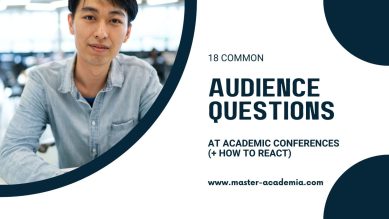
18 common audience questions at academic conferences (+ how to react)

How to introduce yourself in a conference presentation (in six simple steps)
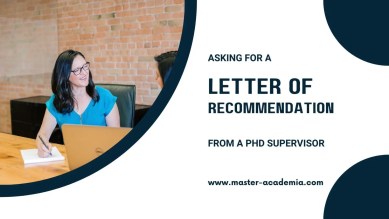
Asking for a recommendation letter from a PhD supervisor
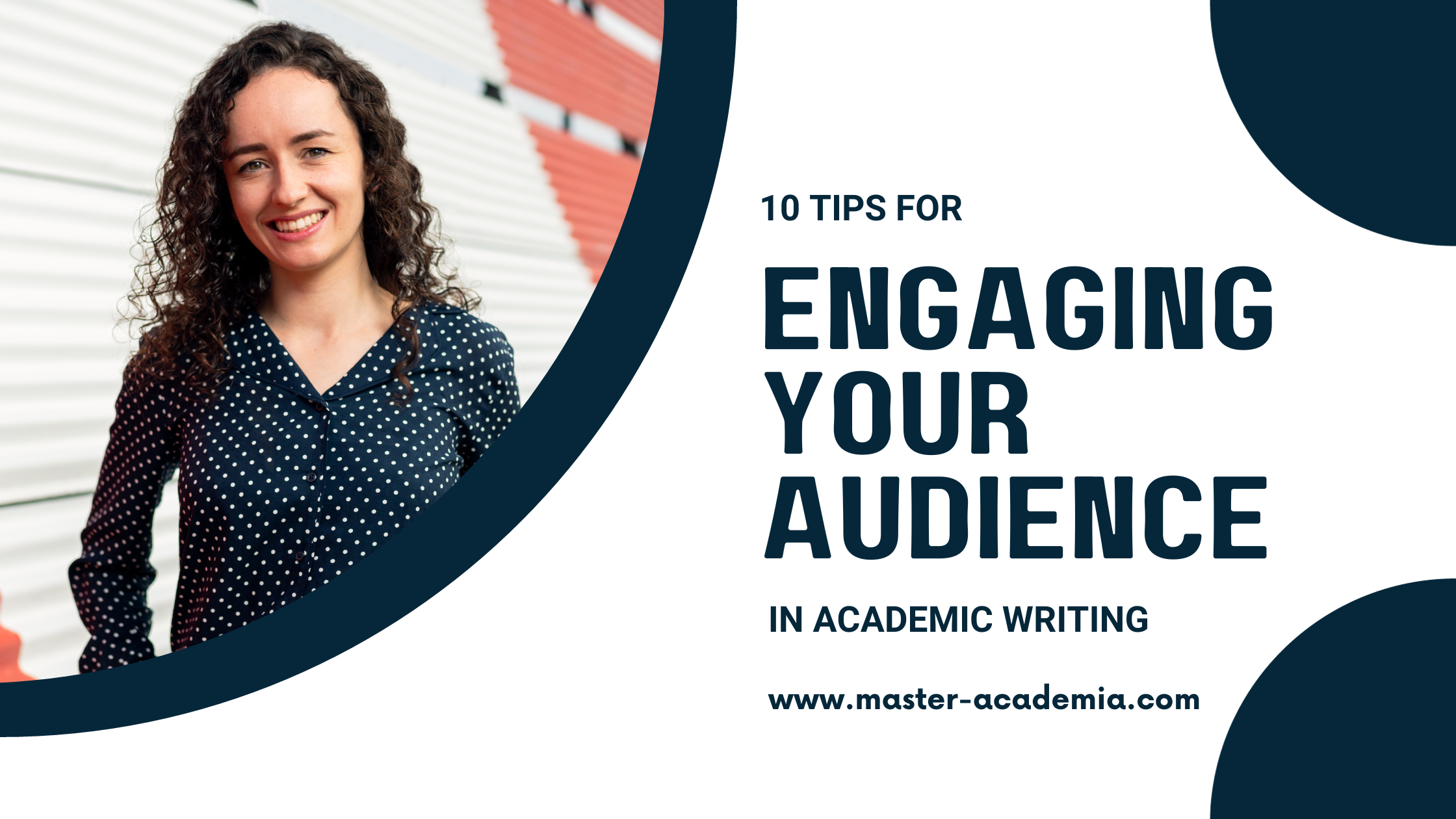
10 tips for engaging your audience in academic writing
New Courses Open for Enrolment! Find Out More
- 40 Useful Words and Phrases for Top-Notch Essays

To be truly brilliant, an essay needs to utilise the right language. You could make a great point, but if it’s not intelligently articulated, you almost needn’t have bothered.
Developing the language skills to build an argument and to write persuasively is crucial if you’re to write outstanding essays every time. In this article, we’re going to equip you with the words and phrases you need to write a top-notch essay, along with examples of how to utilise them.
It’s by no means an exhaustive list, and there will often be other ways of using the words and phrases we describe that we won’t have room to include, but there should be more than enough below to help you make an instant improvement to your essay-writing skills.
If you’re interested in developing your language and persuasive skills, Oxford Royale offers summer courses at its Oxford Summer School , Cambridge Summer School , London Summer School , San Francisco Summer School and Yale Summer School . You can study courses to learn english , prepare for careers in law , medicine , business , engineering and leadership.
General explaining
Let’s start by looking at language for general explanations of complex points.
1. In order to
Usage: “In order to” can be used to introduce an explanation for the purpose of an argument. Example: “In order to understand X, we need first to understand Y.”
2. In other words
Usage: Use “in other words” when you want to express something in a different way (more simply), to make it easier to understand, or to emphasise or expand on a point. Example: “Frogs are amphibians. In other words, they live on the land and in the water.”
3. To put it another way
Usage: This phrase is another way of saying “in other words”, and can be used in particularly complex points, when you feel that an alternative way of wording a problem may help the reader achieve a better understanding of its significance. Example: “Plants rely on photosynthesis. To put it another way, they will die without the sun.”
4. That is to say
Usage: “That is” and “that is to say” can be used to add further detail to your explanation, or to be more precise. Example: “Whales are mammals. That is to say, they must breathe air.”
5. To that end
Usage: Use “to that end” or “to this end” in a similar way to “in order to” or “so”. Example: “Zoologists have long sought to understand how animals communicate with each other. To that end, a new study has been launched that looks at elephant sounds and their possible meanings.”
Adding additional information to support a point
Students often make the mistake of using synonyms of “and” each time they want to add further information in support of a point they’re making, or to build an argument. Here are some cleverer ways of doing this.
6. Moreover
Usage: Employ “moreover” at the start of a sentence to add extra information in support of a point you’re making. Example: “Moreover, the results of a recent piece of research provide compelling evidence in support of…”
7. Furthermore
Usage:This is also generally used at the start of a sentence, to add extra information. Example: “Furthermore, there is evidence to suggest that…”
8. What’s more
Usage: This is used in the same way as “moreover” and “furthermore”. Example: “What’s more, this isn’t the only evidence that supports this hypothesis.”
9. Likewise
Usage: Use “likewise” when you want to talk about something that agrees with what you’ve just mentioned. Example: “Scholar A believes X. Likewise, Scholar B argues compellingly in favour of this point of view.”
10. Similarly
Usage: Use “similarly” in the same way as “likewise”. Example: “Audiences at the time reacted with shock to Beethoven’s new work, because it was very different to what they were used to. Similarly, we have a tendency to react with surprise to the unfamiliar.”
11. Another key thing to remember
Usage: Use the phrase “another key point to remember” or “another key fact to remember” to introduce additional facts without using the word “also”. Example: “As a Romantic, Blake was a proponent of a closer relationship between humans and nature. Another key point to remember is that Blake was writing during the Industrial Revolution, which had a major impact on the world around him.”
12. As well as
Usage: Use “as well as” instead of “also” or “and”. Example: “Scholar A argued that this was due to X, as well as Y.”
13. Not only… but also
Usage: This wording is used to add an extra piece of information, often something that’s in some way more surprising or unexpected than the first piece of information. Example: “Not only did Edmund Hillary have the honour of being the first to reach the summit of Everest, but he was also appointed Knight Commander of the Order of the British Empire.”
14. Coupled with
Usage: Used when considering two or more arguments at a time. Example: “Coupled with the literary evidence, the statistics paint a compelling view of…”
15. Firstly, secondly, thirdly…
Usage: This can be used to structure an argument, presenting facts clearly one after the other. Example: “There are many points in support of this view. Firstly, X. Secondly, Y. And thirdly, Z.
16. Not to mention/to say nothing of
Usage: “Not to mention” and “to say nothing of” can be used to add extra information with a bit of emphasis. Example: “The war caused unprecedented suffering to millions of people, not to mention its impact on the country’s economy.”
Words and phrases for demonstrating contrast
When you’re developing an argument, you will often need to present contrasting or opposing opinions or evidence – “it could show this, but it could also show this”, or “X says this, but Y disagrees”. This section covers words you can use instead of the “but” in these examples, to make your writing sound more intelligent and interesting.
17. However
Usage: Use “however” to introduce a point that disagrees with what you’ve just said. Example: “Scholar A thinks this. However, Scholar B reached a different conclusion.”
18. On the other hand
Usage: Usage of this phrase includes introducing a contrasting interpretation of the same piece of evidence, a different piece of evidence that suggests something else, or an opposing opinion. Example: “The historical evidence appears to suggest a clear-cut situation. On the other hand, the archaeological evidence presents a somewhat less straightforward picture of what happened that day.”
19. Having said that
Usage: Used in a similar manner to “on the other hand” or “but”. Example: “The historians are unanimous in telling us X, an agreement that suggests that this version of events must be an accurate account. Having said that, the archaeology tells a different story.”
20. By contrast/in comparison
Usage: Use “by contrast” or “in comparison” when you’re comparing and contrasting pieces of evidence. Example: “Scholar A’s opinion, then, is based on insufficient evidence. By contrast, Scholar B’s opinion seems more plausible.”
21. Then again
Usage: Use this to cast doubt on an assertion. Example: “Writer A asserts that this was the reason for what happened. Then again, it’s possible that he was being paid to say this.”
22. That said
Usage: This is used in the same way as “then again”. Example: “The evidence ostensibly appears to point to this conclusion. That said, much of the evidence is unreliable at best.”
Usage: Use this when you want to introduce a contrasting idea. Example: “Much of scholarship has focused on this evidence. Yet not everyone agrees that this is the most important aspect of the situation.”
Adding a proviso or acknowledging reservations
Sometimes, you may need to acknowledge a shortfalling in a piece of evidence, or add a proviso. Here are some ways of doing so.
24. Despite this
Usage: Use “despite this” or “in spite of this” when you want to outline a point that stands regardless of a shortfalling in the evidence. Example: “The sample size was small, but the results were important despite this.”
25. With this in mind
Usage: Use this when you want your reader to consider a point in the knowledge of something else. Example: “We’ve seen that the methods used in the 19th century study did not always live up to the rigorous standards expected in scientific research today, which makes it difficult to draw definite conclusions. With this in mind, let’s look at a more recent study to see how the results compare.”
26. Provided that
Usage: This means “on condition that”. You can also say “providing that” or just “providing” to mean the same thing. Example: “We may use this as evidence to support our argument, provided that we bear in mind the limitations of the methods used to obtain it.”
27. In view of/in light of
Usage: These phrases are used when something has shed light on something else. Example: “In light of the evidence from the 2013 study, we have a better understanding of…”
28. Nonetheless
Usage: This is similar to “despite this”. Example: “The study had its limitations, but it was nonetheless groundbreaking for its day.”
29. Nevertheless
Usage: This is the same as “nonetheless”. Example: “The study was flawed, but it was important nevertheless.”
30. Notwithstanding
Usage: This is another way of saying “nonetheless”. Example: “Notwithstanding the limitations of the methodology used, it was an important study in the development of how we view the workings of the human mind.”
Giving examples
Good essays always back up points with examples, but it’s going to get boring if you use the expression “for example” every time. Here are a couple of other ways of saying the same thing.
31. For instance
Example: “Some birds migrate to avoid harsher winter climates. Swallows, for instance, leave the UK in early winter and fly south…”
32. To give an illustration
Example: “To give an illustration of what I mean, let’s look at the case of…”
Signifying importance
When you want to demonstrate that a point is particularly important, there are several ways of highlighting it as such.
33. Significantly
Usage: Used to introduce a point that is loaded with meaning that might not be immediately apparent. Example: “Significantly, Tacitus omits to tell us the kind of gossip prevalent in Suetonius’ accounts of the same period.”
34. Notably
Usage: This can be used to mean “significantly” (as above), and it can also be used interchangeably with “in particular” (the example below demonstrates the first of these ways of using it). Example: “Actual figures are notably absent from Scholar A’s analysis.”
35. Importantly
Usage: Use “importantly” interchangeably with “significantly”. Example: “Importantly, Scholar A was being employed by X when he wrote this work, and was presumably therefore under pressure to portray the situation more favourably than he perhaps might otherwise have done.”

Summarising
You’ve almost made it to the end of the essay, but your work isn’t over yet. You need to end by wrapping up everything you’ve talked about, showing that you’ve considered the arguments on both sides and reached the most likely conclusion. Here are some words and phrases to help you.
36. In conclusion
Usage: Typically used to introduce the concluding paragraph or sentence of an essay, summarising what you’ve discussed in a broad overview. Example: “In conclusion, the evidence points almost exclusively to Argument A.”
37. Above all
Usage: Used to signify what you believe to be the most significant point, and the main takeaway from the essay. Example: “Above all, it seems pertinent to remember that…”
38. Persuasive
Usage: This is a useful word to use when summarising which argument you find most convincing. Example: “Scholar A’s point – that Constanze Mozart was motivated by financial gain – seems to me to be the most persuasive argument for her actions following Mozart’s death.”
39. Compelling
Usage: Use in the same way as “persuasive” above. Example: “The most compelling argument is presented by Scholar A.”
40. All things considered
Usage: This means “taking everything into account”. Example: “All things considered, it seems reasonable to assume that…”
How many of these words and phrases will you get into your next essay? And are any of your favourite essay terms missing from our list? Let us know in the comments below, or get in touch here to find out more about courses that can help you with your essays.
At Oxford Royale Academy, we offer a number of summer school courses for young people who are keen to improve their essay writing skills. Click here to apply for one of our courses today, including law , business , medicine and engineering .
Comments are closed.

50 Useful Academic Words & Phrases for Research
Like all good writing, writing an academic paper takes a certain level of skill to express your ideas and arguments in a way that is natural and that meets a level of academic sophistication. The terms, expressions, and phrases you use in your research paper must be of an appropriate level to be submitted to academic journals.
Therefore, authors need to know which verbs , nouns , and phrases to apply to create a paper that is not only easy to understand, but which conveys an understanding of academic conventions. Using the correct terminology and usage shows journal editors and fellow researchers that you are a competent writer and thinker, while using non-academic language might make them question your writing ability, as well as your critical reasoning skills.
What are academic words and phrases?
One way to understand what constitutes good academic writing is to read a lot of published research to find patterns of usage in different contexts. However, it may take an author countless hours of reading and might not be the most helpful advice when faced with an upcoming deadline on a manuscript draft.
Briefly, “academic” language includes terms, phrases, expressions, transitions, and sometimes symbols and abbreviations that help the pieces of an academic text fit together. When writing an academic text–whether it is a book report, annotated bibliography, research paper, research poster, lab report, research proposal, thesis, or manuscript for publication–authors must follow academic writing conventions. You can often find handy academic writing tips and guidelines by consulting the style manual of the text you are writing (i.e., APA Style , MLA Style , or Chicago Style ).
However, sometimes it can be helpful to have a list of academic words and expressions like the ones in this article to use as a “cheat sheet” for substituting the better term in a given context.
How to Choose the Best Academic Terms
You can think of writing “academically” as writing in a way that conveys one’s meaning effectively but concisely. For instance, while the term “take a look at” is a perfectly fine way to express an action in everyday English, a term like “analyze” would certainly be more suitable in most academic contexts. It takes up fewer words on the page and is used much more often in published academic papers.
You can use one handy guideline when choosing the most academic term: When faced with a choice between two different terms, use the Latinate version of the term. Here is a brief list of common verbs versus their academic counterparts:
Although this can be a useful tip to help academic authors, it can be difficult to memorize dozens of Latinate verbs. Using an AI paraphrasing tool or proofreading tool can help you instantly find more appropriate academic terms, so consider using such revision tools while you draft to improve your writing.
Top 50 Words and Phrases for Different Sections in a Research Paper
The “Latinate verb rule” is just one tool in your arsenal of academic writing, and there are many more out there. But to make the process of finding academic language a bit easier for you, we have compiled a list of 50 vital academic words and phrases, divided into specific categories and use cases, each with an explanation and contextual example.
Best Words and Phrases to use in an Introduction section
1. historically.
An adverb used to indicate a time perspective, especially when describing the background of a given topic.
2. In recent years
A temporal marker emphasizing recent developments, often used at the very beginning of your Introduction section.
3. It is widely acknowledged that
A “form phrase” indicating a broad consensus among researchers and/or the general public. Often used in the literature review section to build upon a foundation of established scientific knowledge.
4. There has been growing interest in
Highlights increasing attention to a topic and tells the reader why your study might be important to this field of research.
5. Preliminary observations indicate
Shares early insights or findings while hedging on making any definitive conclusions. Modal verbs like may , might , and could are often used with this expression.
6. This study aims to
Describes the goal of the research and is a form phrase very often used in the research objective or even the hypothesis of a research paper .
7. Despite its significance
Highlights the importance of a matter that might be overlooked. It is also frequently used in the rationale of the study section to show how your study’s aim and scope build on previous studies.
8. While numerous studies have focused on
Indicates the existing body of work on a topic while pointing to the shortcomings of certain aspects of that research. Helps focus the reader on the question, “What is missing from our knowledge of this topic?” This is often used alongside the statement of the problem in research papers.
9. The purpose of this research is
A form phrase that directly states the aim of the study.
10. The question arises (about/whether)
Poses a query or research problem statement for the reader to acknowledge.
Best Words and Phrases for Clarifying Information
11. in other words.
Introduces a synopsis or the rephrasing of a statement for clarity. This is often used in the Discussion section statement to explain the implications of the study .
12. That is to say
Provides clarification, similar to “in other words.”
13. To put it simply
Simplifies a complex idea, often for a more general readership.
14. To clarify
Specifically indicates to the reader a direct elaboration of a previous point.
15. More specifically
Narrows down a general statement from a broader one. Often used in the Discussion section to clarify the meaning of a specific result.
16. To elaborate
Expands on a point made previously.
17. In detail
Indicates a deeper dive into information.
Points out specifics. Similar meaning to “specifically” or “especially.”
19. This means that
Explains implications and/or interprets the meaning of the Results section .
20. Moreover
Expands a prior point to a broader one that shows the greater context or wider argument.
Best Words and Phrases for Giving Examples
21. for instance.
Provides a specific case that fits into the point being made.
22. As an illustration
Demonstrates a point in full or in part.
23. To illustrate
Shows a clear picture of the point being made.
24. For example
Presents a particular instance. Same meaning as “for instance.”
25. Such as
Lists specifics that comprise a broader category or assertion being made.
26. Including
Offers examples as part of a larger list.
27. Notably
Adverb highlighting an important example. Similar meaning to “especially.”
28. Especially
Adverb that emphasizes a significant instance.
29. In particular
Draws attention to a specific point.
30. To name a few
Indicates examples than previously mentioned are about to be named.
Best Words and Phrases for Comparing and Contrasting
31. however.
Introduces a contrasting idea.
32. On the other hand
Highlights an alternative view or fact.
33. Conversely
Indicates an opposing or reversed idea to the one just mentioned.
34. Similarly
Shows likeness or parallels between two ideas, objects, or situations.
35. Likewise
Indicates agreement with a previous point.
36. In contrast
Draws a distinction between two points.
37. Nevertheless
Introduces a contrasting point, despite what has been said.
38. Whereas
Compares two distinct entities or ideas.
Indicates a contrast between two points.
Signals an unexpected contrast.
Best Words and Phrases to use in a Conclusion section
41. in conclusion.
Signifies the beginning of the closing argument.
42. To sum up
Offers a brief summary.
43. In summary
Signals a concise recap.
44. Ultimately
Reflects the final or main point.
45. Overall
Gives a general concluding statement.
Indicates a resulting conclusion.
Demonstrates a logical conclusion.
48. Therefore
Connects a cause and its effect.
49. It can be concluded that
Clearly states a conclusion derived from the data.
50. Taking everything into consideration
Reflects on all the discussed points before concluding.
Edit Your Research Terms and Phrases Before Submission
Using these phrases in the proper places in your research papers can enhance the clarity, flow, and persuasiveness of your writing, especially in the Introduction section and Discussion section, which together make up the majority of your paper’s text in most academic domains.
However, it's vital to ensure each phrase is contextually appropriate to avoid redundancy or misinterpretation. As mentioned at the top of this article, the best way to do this is to 1) use an AI text editor , free AI paraphrase tool or AI proofreading tool while you draft to enhance your writing, and 2) consult a professional proofreading service like Wordvice, which has human editors well versed in the terminology and conventions of the specific subject area of your academic documents.
For more detailed information on using AI tools to write a research paper and the best AI tools for research , check out the Wordvice AI Blog .
Training videos | Faqs

Useful Phrases and Sentences for Academic & Research Paper Writing
Overview | Abstract | Introduction | Literature Review | Materials & Methods | Results & Discussion | Conclusion & Future Work | Acknowledgements & Appendix
1. Abstract
An abstract is a self-contained and short synopsis that describes a larger work. The abstract is the only part of the paper that is published online and in most conference proceedings. Hence abstract constitutes a very important section of your paper. Also, when you submit your paper to a journal, potential reviewers only see the abstract when invited by an editor to review a manuscript. The abstract should include one or two lines briefly describing the topic, scope, purpose, results, and conclusion of your work. The abstract is indexed by search engines, so make sure that it has all the right words that a fellow researcher in the same field will be using while searching for articles online. Also, make sure it is rich with data and numbers to demonstrate the scientific rigor of your article. Be very clear and confident about your findings. Keep it punchy and straight to the point.
The abstract section of your research paper should include the following:
Click here for the academic phrases and vocabulary for the abstract section of the research paper…
2. Introduction
Introduction section comes after the abstract. Introduction section should provide the reader with a brief overview of your topic and the reasons for conducting research. The introduction is a perfect place to set the scene and make a good first impression. Regarding word count, introduction typically occupies 10-15% of your paper, for example, if the total word count of your paper is 3000, then you should aim for an introduction of around 600 words. It is often recommended that the introduction section of the paper is written after finishing the other sections of the paper. This is because it is difficult to figure out what exactly to put in the introduction section of the paper until you have seen the big picture. Sound very confident about your chosen subject area and back up your arguments with appropriate references. After reading the introduction, the reader must have a clear idea of what to expect from the rest of your research paper.
The introduction section of your research paper should include the following:
- General introduction
- Problem definition
- Gaps in the literature
- Problems solution
- Study motivation
- Aims & objectives
- Significance and advantages of your work
Click here for the academic phrases and vocabulary for the introduction section of the research paper…
3. Literature review
The literature review should clearly demonstrate that the author has a good knowledge of the research area. Literature review typically occupies one or two passages in the introduction section. A well-written literature review should provide a critical appraisal of previous studies related to the current research area rather than a simple summary of prior works. The author shouldn’t shy away from pointing out the shortcomings of previous works. However, criticising other’s work without any basis can weaken your paper. This is a perfect place to coin your research question and justify the need for such a study. It is also worth pointing out towards the end of the review that your study is unique and there is no direct literature addressing this issue. Add a few sentences about the significance of your research and how this will add value to the body of knowledge.
The literature review section of your research paper should include the following:
- Previous literature
- Limitations of previous research
- Research questions
- Research to be explored
Click here for the academic phrases and vocabulary for the literature review section of the research paper…
4. Materials and Methods
The methods section that follows the introduction section should provide a clear description of the experimental procedure, and the reasons behind the choice of specific experimental methods. The methods section should be elaborate enough so that the readers can repeat the experimental procedure and reproduce the results. The scientific rigor of the paper is judged by your materials and methods section, so make sure you elaborate on all the fine details of your experiment. Explain the procedures step-by-step by splitting the main section into multiple sub-sections. Order procedures chronologically with subheadings. Use past tense to describe what you did since you are reporting on a completed experiment. The methods section should describe how the research question was answered and explain how the results were analyzed. Clearly explain various statistical methods used for significance testing and the reasons behind the choice.
The methods section of your research paper should include the following:
- Experimental setup
- Data collection
- Data analysis
- Statistical testing
- Assumptions
- Remit of the experiment
Click here for the academic phrases and vocabulary for the methods section of the research paper…
5. Results and Discussion
The results and discussion sections are one of the challenging sections to write. It is important to plan this section carefully as it may contain a large amount of scientific data that needs to be presented in a clear and concise fashion. The purpose of a Results section is to present the key results of your research. Results and discussions can either be combined into one section or organized as separate sections depending on the requirements of the journal to which you are submitting your research paper. Use subsections and subheadings to improve readability and clarity. Number all tables and figures with descriptive titles. Present your results as figures and tables and point the reader to relevant items while discussing the results. This section should highlight significant or interesting findings along with P values for statistical tests. Be sure to include negative results and highlight potential limitations of the paper. You will be criticized by the reviewers if you don’t discuss the shortcomings of your research. This often makes up for a great discussion section, so do not be afraid to highlight them.
The results and discussion section of your research paper should include the following:
- Comparison with prior studies
- Limitations of your work
- Casual arguments
- Speculations
- Deductive arguments
Click here for the academic phrases and vocabulary for the results and discussion section of the research paper…
6. Conclusion and Future Work
A research paper should end with a well-constructed conclusion. The conclusion is somewhat similar to the introduction. You restate your aims and objectives and summarize your main findings and evidence for the reader. You can usually do this in one paragraph with three main key points, and one strong take-home message. You should not present any new arguments in your conclusion. You can raise some open questions and set the scene for the next study. This is a good place to register your thoughts about possible future work. Try to explain to your readers what more could be done? What do you think are the next steps to take? What other questions warrant further investigation? Remember, the conclusion is the last part of the essay that your reader will see, so spend some time writing the conclusion so that you can end on a high note.
The conclusion section of your research paper should include the following:
- Overall summary
- Further research
Click here for the academic phrases and vocabulary for the conclusions and future work sections of the research paper…
7. Acknowledgements and Appendix
There is no standard way to write acknowledgements. This section allows you to thank all the people who helped you with the project. You can take either formal or informal tone; you won’t be penalized. You can place supplementary materials in the appendix and refer to them in the main text. There is no limit on what you can place in the appendix section. This can include figures, tables, costs, budget, maps, etc. Anything that is essential for the paper but might potentially interrupt the flow of the paper goes in the appendix.
Click here for the academic phrases and vocabulary for the acknowledgements and appendix sections of the research paper…
Similar Posts

Writing a Medical Clinical Trial Research Paper – Example & Format
In this blog, we will teach you step-by-step how to write a clinical trial research paper for publication in a high quality scientific journal.
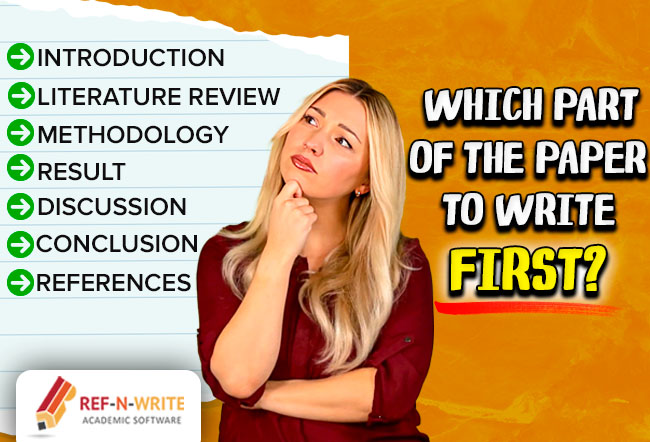
The Best Order to Write a Research Paper
In this blog we will look at the perfect sequence for drafting a research manuscript.
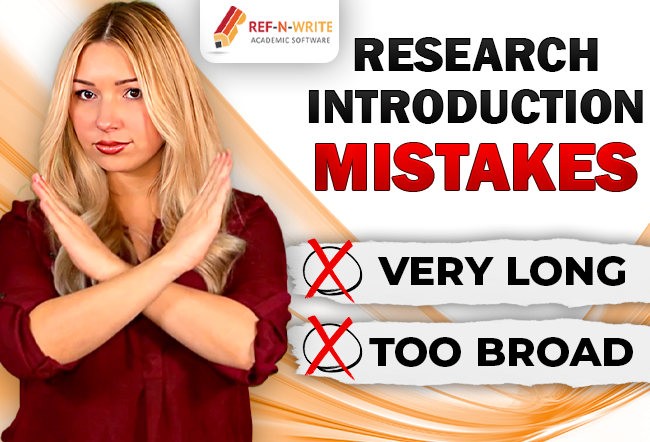
3 Costly Mistakes to Avoid in the Research Introduction
In this blog, we will discuss three common mistakes that beginner writers make while writing the research paper introduction.

Formulating Strong Research Questions: Examples and Writing Tips
In this blog, we will go through many research question examples and understand how to construct a strong research question for your paper.

Introduction Paragraph Examples and Writing Tips
In this blog, we will go through a few introduction paragraph examples and understand how to construct a great introduction paragraph for your research paper.
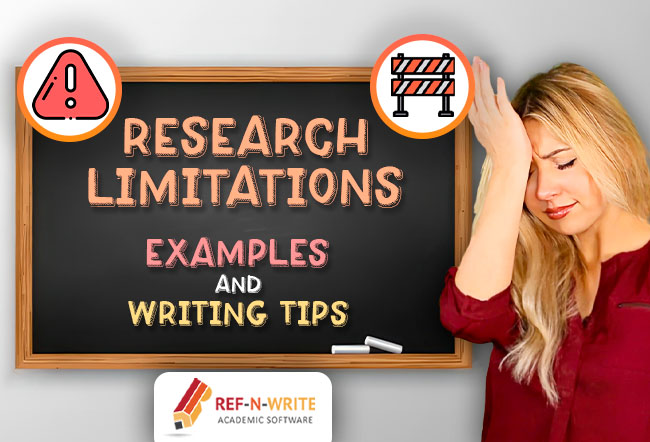
Limitations in Research – A Simplified Guide with Examples
In this blog, we provide tips for presenting study limitations in your paper and provide some real-world examples.
Thanks for your effort. could I have a PDF having all the info included here.
You can control + p and save as pdf
- Pingback: Scholarly Paraphrasing Tool and Essay Rewriter for Rewording Academic Papers - Ref-N-Write: Scientific Research Paper Writing Software Tool - Improve Academic English Writing Skills
thank you so much
if you can also add on verbs used for each section would be good further
First of all, Thanks! I really appreciate the time and effort you put into http://www.intoref-n-write.com/trial/how-to-write-a-research-paper-academic-phrasebank-vocabulary/ ) which have greatly enhanced understanding of “how-to-write-a-research-paper”.
Thank you very much for this 🙂
Thank you very much!
Leave a Reply Cancel reply
Your email address will not be published. Required fields are marked *
Save my name, email, and website in this browser for the next time I comment.
- 23 Share Facebook
- 27 Share Twitter
- 28 Share LinkedIn
- 37 Share Email
- If you are writing in a new discipline, you should always make sure to ask about conventions and expectations for introductions, just as you would for any other aspect of the essay. For example, while it may be acceptable to write a two-paragraph (or longer) introduction for your papers in some courses, instructors in other disciplines, such as those in some Government courses, may expect a shorter introduction that includes a preview of the argument that will follow.
- In some disciplines (Government, Economics, and others), it’s common to offer an overview in the introduction of what points you will make in your essay. In other disciplines, you will not be expected to provide this overview in your introduction.
- Avoid writing a very general opening sentence. While it may be true that “Since the dawn of time, people have been telling love stories,” it won’t help you explain what’s interesting about your topic.
- Avoid writing a “funnel” introduction in which you begin with a very broad statement about a topic and move to a narrow statement about that topic. Broad generalizations about a topic will not add to your readers’ understanding of your specific essay topic.
- Avoid beginning with a dictionary definition of a term or concept you will be writing about. If the concept is complicated or unfamiliar to your readers, you will need to define it in detail later in your essay. If it’s not complicated, you can assume your readers already know the definition.
- Avoid offering too much detail in your introduction that a reader could better understand later in the paper.
- picture_as_pdf Introductions

IMAGES
VIDEO
COMMENTS
If you struggle with writing an introduction and finding the right wording, academic key phrases can help! Here is a list of 26 useful academic phrases to write the introduction of a research paper or thesis. Furthermore, examples from published academic papers across various disciplines are provided to demonstrate how the academic phrases can ...
4. That is to say. Usage: “That is” and “that is to say” can be used to add further detail to your explanation, or to be more precise. Example: “Whales are mammals. That is to say, they must breathe air.”. 5. To that end. Usage: Use “to that end” or “to this end” in a similar way to “in order to” or “so”.
In this blog, we discuss phrases related to introduction section such as opening statement, problem definition and research aims. Introduction section should provide the reader with a brief overview of your topic and the reasons for conducting research. The introduction is a perfect place to set the scene and make a good first impression. Regarding word count, introduction typically occupies ...
Provides clarification, similar to “in other words.”. Example The reaction is exothermic; that is to say, it releases heat. 13. To put it simply. Simplifies a complex idea, often for a more general readership. Example The universe is vast; to put it simply, it is larger than anything we can truly imagine. 14.
The Oxford Phrasal Academic Lexicon . The Oxford Phrasal Academic LexiconTMThe Oxford Phrasal Academic Lexicon (OPAL) is a set of four word lists that together provide an essential guide to the most important words and phrases to know in the field. f English for Academic Purposes (EAP). This list gives around 370 important phrases for academic wri.
Academic Phrases Phrases for an introduction. Phrases for an introductionAcademic PhrasesThis paper. ill focus on/examine/give an account of ...The objectives. seeks to address the following questions: The. m of this paper is to determine/examine ...The main questions/iss. s addressed in this paper are a), b and c).
Significance and advantages of your work. Click here for the academic phrases and vocabulary for the introduction section of the research paper…. 3. Literature review. The literature review should clearly demonstrate that the author has a good knowledge of the research area. Literature review typically occupies one or two passages in the ...
Phrases to introduce the importance of your topic. [X] plays a crucial role in …. [X] is considered to be key to …. [X] is responsible for …. [Xs] are among the most commonly investigated …. [X] is generally regarded as the primary cause of ….
on of the introduction paragraph should outline how your paper is organized. While this element may be omitted depending on the nature and length of the paper, it is especially us. ful when writing larger, more complex papers that include multiple sections. This provides the reader with a gen. ral idea of how the paper is laid out and the ...
In general, your introductions should contain the following elements: When you’re writing an essay, it’s helpful to think about what your reader needs to know in order to follow your argument. Your introduction should include enough information so that readers can understand the context for your thesis. For example, if you are analyzing ...